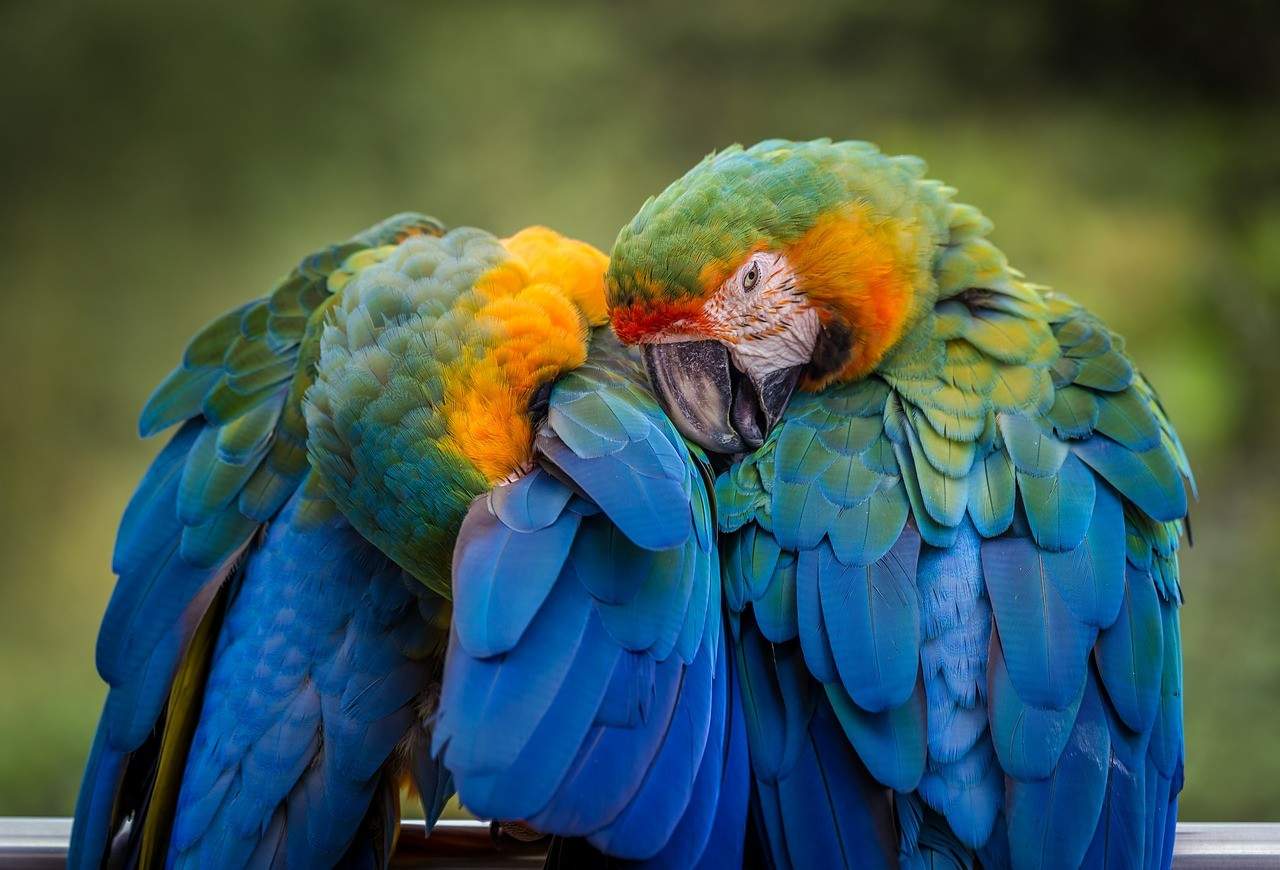Parakeets are among the happiest and colorful pet birds that you can invite in your house. They are sociable, fun loving, and much smarter than their size. And, well, when you have met an English budgie, or seen a pink budgerigar on facebook, or have been wondering when considering the numerous types of parakeet globally, one thing always pops to mind, how long do they live?
Here we will find all about parakeet life expectancy, how to keep them and why each type of budgie, whether that is the English budgie or the rare pink budgie is so special. We will discuss other things as well including budgerigar colors, the favored budgie food and how to make sure your bird is happy throughout life.
1. Parakeet Life Expectancy
Parakeets generally live around 5-15 years (gradually), though it can vary considerably with regards to the maintenance of the bird, atmosphere and diet. Others have lasted to 20 years and with good care.
Important influences on the length of life:
- Diet: Healthy combination of seeds, pellets, vegetable, and fruits.
- Environment: A Clear and safe spacious cage with Fresh air.
- Exercise: Out of the cage, flying and stretching wings.
- Health care: Frequent exams and prompt care of sickness.
Normal average life by type:
- American Budgie: 5 10 years.
- English Budgie (England Budgie): 7 to 12 years.
- Outliers: 15+ years.
Pro tip: Stress should be minimal- No loud sounds, no fumes and no sudden environmental changes. Happy budgies tend to be healthy budgies.
2. English Budgie (England Budgie)
English budgie is an English name describing the English variety of budgie or England budgie, or the English budgerigar bird which is larger and calmer than the common budgie. They are shown/bred in the UK so are fluffier and more felt/groomed.
The differences between them:
- Size: About 10 inches to the 7 inch American budgie.
- Temperament: Mild, easygoing and tractable.
- Physical look: Densely feathered, bigger head, gentler face.
- Age: Averagely lives to 7-12 years old.
The English budgie is likely to be easier to break and find companionship with, especially when compared to the smaller ones if you are a novice bird owner.
3. Types of Parakeets & Parakeet Species
The term parakeet masks a huge level of tiny parrots, the species with lengthy tails. Although the most popular one is a budgie, there are numerous species of parakeets you may come across:
- Budgerigar (Budgie): Affable, cheerful and simple to maintain.
- Monk Parakeet (Quaker Parrot): Green intelligent talkative.
- Indian Ringneck Parakeet: The one that was famous as a clear speech.
- Bourke Parakeet: Pastel pink and blue in color and calm.
- Lineolated Parakeet: Respectful, and loving, suitable to apartments.
Knowing the kinds of parakeets will enable you select the one that suits you and your way of life.
4. Budgerigar Colors
Budgies are characterized by truly amazing variety of colors and patterns. There are hundreds of colors that breeders have developed in budgerigars but the following are some of the most common:
- Green & Yellow: The wild type plant.
- Racer Blue and White: Vivid and attention getting.
- Lutino: Yellow-colored feathers and the red-colored eyes.
- Albino: White feathers and red eyes.
- Opaline: A mixture of soft feather patterns.
- Spangle: Sundry wing markings.
- Pink Budgie: Exotic and lovely.
The color does not influence the life expectancy of parakeets, yet it definitely emphasizes their beauty.
5. Pink Budgie & Pink Budgerigar
The pink budgie and pink budgerigar may attract many people because of its peculiar color. They however are very rare.
Here are some facts about the pink budgies:
- The majority of pictures considered to be pink on the Internet are either colored or photographed using the source of the colored light.
- A few pastel mutations may produce a pinkish shade.
- Breeders regard pink budgerigar as a very special budgerigar.
6. Budgie Diet for Longer Life
One of the overarching factors in enhancing expected parakeet longevity is the right diet of the budgie.
Good eatables are:
- Seeds: Aspersed on other foods, and not a diet in itself.
- Pellets: They are good source of balanced nutrition.
- Vegetables: dirdiras bulks, carrots, broccoli, kale.
Berries, apples, pears (LO method).
- Fresh water: Change every day.
- Do not feed: Avocado, chocolate, caffeine, alcohol, salty snacks and anything with a high content of sugar.
Hint: Do not be monotonous -change vegetables and fruits to avoid boredom in your buddy.
7. Caring for Your Parakeet
The daily care is of paramount importance to your bird:
- Large cage: Enables wings to be extended and moving.
- Toy and perches: Keep your budgie entertained.
- Social: Chat, whistle and play.
- Flight time: safe, witnessed exercise flying.
Visits: Visits to vets to conduct early checks and ailments.
8. Why Budgies Make Wonderful Pets
-
Affectionate: Many love sitting on your shoulder.
-
Smart: Can mimic words and learn tricks.
-
Affordable: Less costly than many pets.
-
Space-friendly: Perfect for apartments.
-
Colorful: From classic greens to rare pink budgerigars.
9. Common Health Issues in Parakeets (and Prevention)
To maximize the life expectancy of parakeet, it is critical to learn various health problems that will reduce its lifespan. There is the problem of respiratory, psittacosis, obesity, scaly face mites and egg binding in females that may affect the overall health of your bird. Following these issues at their earliest stage and maintaining a consistent vet appointment will allow you to extend parakeet lifespan and ensure your feathered pet lives long enough to have a happy retirement.
Common problems:
Infection of the respiratory tract-Avoid drafts, air should be tidy.
- Psittacosis – periodical vet visits are necessary.
- Obesity – Avoid high fatty seeds and snacks.
- Scaly face mites Seek treatment – Watch face or beak is crusty.
- Egg binding: prevalent among the females; good diet and calcium.
Prevention Tip: The behavior of your bird should be observed well, in case they appear or grow lethargic, fluff their feathers, or refuse food, visit a vet right away.
10. Signs of a Happy, Healthy Parakeet
-
Chirping, singing, and mimicking sounds.
-
Active flying and climbing.
-
Preening feathers regularly.
-
Curious about surroundings.
-
Eating and drinking normally.
11. Bonding With Your Parakeet
A strong bond can reduce stress and boost lifespan.
-
Spend time talking to them daily.
-
Offer treats from your hand.
-
Play gentle games like “follow the finger.”
-
Teach small tricks for mental stimulation.
FAQ
Q: How long do parakeets live as pets?
A: Most live 5–15 years, depending on care, diet, and environment.
Q: Do English budgies live longer than regular budgies?
A: Yes, they often live 7–12 years compared to 5–10 years for American budgies.
Q: Can a parakeet live 20 years?
A: Rarely, but with exceptional care, some have reached 20 years.
Q: What shortens a parakeet’s life?
A: Poor diet, lack of exercise, unsafe housing, and untreated illness.
Final Thoughts
It is not only the matter of chance; parakeet life expectancy is conditioned by the way you treat your bird. Even your parakeet can live more than ten years happily and safely with good budgie diet, a protective and friendly home and frequent care.
Whether it is the captivating beauty of the gentle English budgie, the interest in other varieties of parakeets or the pink budgies, one is sure that these small creatures add never-ending fun and character to any house.

